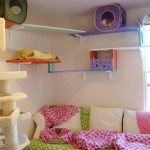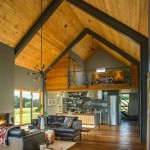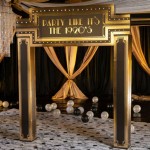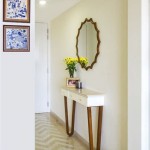Under The Sea Girl Room Decor Ideas: Creating an Aquatic Haven
Transforming a child's bedroom into an underwater paradise requires careful planning and execution. An "Under The Sea" themed room can stimulate imagination, foster creativity, and provide a calming, engaging environment for a young girl. This article explores various decor ideas designed to create an immersive, visually appealing, and functional space that captures the essence of the ocean.
Choosing a Color Palette and Establishing the Foundation
The foundation of any successful themed room lies in its color palette. For an under the sea theme, a combination of blues, greens, and sandy beiges is crucial. Layering different shades of these colors creates depth and mimics the varying hues found in the ocean. Consider using a light blue for the walls to represent the sky reflecting on the water's surface. Accents of teal, turquoise, and seafoam green can be incorporated through textiles, artwork, and accessories. A sandy beige or light tan color can be used for the flooring or furniture to represent the ocean floor.
When selecting paint, opt for low-VOC (volatile organic compounds) options to ensure a healthy environment for the child. Consider using different paint finishes to add visual texture. For example, a matte finish on the walls creates a soft, muted background, while a semi-gloss finish on the trim and doors provides durability and allows for easy cleaning. A subtle shimmer or pearlized finish on an accent wall can simulate the glistening effect of sunlight on the water.
Flooring options should be practical and visually appealing. Hardwood floors or laminate can be used as a base and covered with a large area rug that features an underwater scene or a gradient of blues and greens. Alternatively, carpeting in a light blue or beige color can provide a soft and comfortable surface underfoot. Consider adding smaller, themed rugs shaped like starfish, seashells, or fish to further enhance the aquatic atmosphere.
Implementing Themed Furniture and Storage Solutions
Furniture selection plays a significant role in reinforcing the under the sea theme. Opt for pieces that are functional, durable, and aesthetically aligned with the overall design. A bed frame shaped like a boat or a seashell can serve as a focal point in the room. Alternatively, a simple wooden bed frame painted in a light blue or white can be adorned with themed bedding and pillows.
Storage solutions are essential for maintaining an organized and clutter-free space. Consider incorporating shelves shaped like waves or coral reefs to display books, toys, and decorative items. Chests or trunks painted to resemble treasure chests can be used to store larger items, such as blankets and stuffed animals. Baskets made of natural materials, such as seagrass or wicker, can be used to organize smaller items and add a touch of rustic charm.
Repurposing existing furniture can also be a cost-effective way to create a themed room. An old dresser can be transformed into an under the sea masterpiece with a fresh coat of paint and themed hardware, such as seashell-shaped knobs or drawer pulls. A plain desk can be adorned with a custom-made desktop featuring an underwater scene or a map of the ocean.
Safety is paramount when selecting furniture for a child's room. Ensure that all pieces are sturdy, free of sharp edges, and properly anchored to the wall to prevent tipping. Opt for non-toxic finishes and materials to minimize the risk of exposure to harmful chemicals.
Incorporating Decorative Elements and Accents
Decorative elements and accents are the details that truly bring an under the sea themed room to life. These elements can include wall art, lighting, textiles, and accessories that reinforce the aquatic theme and create a sense of immersion.
Wall art can range from professionally printed canvases to DIY projects. Murals depicting underwater scenes, such as coral reefs, schools of fish, and playful dolphins, can transform an entire wall into a stunning focal point. Alternatively, framed prints featuring illustrations of sea creatures, nautical maps, or inspirational quotes can be hung individually or in a gallery arrangement. Consider incorporating 3D elements, such as seashells, starfish, or miniature boats, to add texture and dimension to the wall art.
Lighting plays a crucial role in setting the mood and creating a sense of atmosphere. A ceiling fixture shaped like a jellyfish or a starfish can serve as a whimsical focal point. String lights adorned with seashells or miniature fish can be draped around the room to create a soft, ambient glow. A bedside lamp with a blue or green shade can provide task lighting for reading and other activities. Consider using dimmers to adjust the brightness of the lights and create a more relaxing atmosphere at bedtime.
Textiles, such as bedding, curtains, and rugs, offer opportunities to incorporate patterns, colors, and textures that reinforce the under the sea theme. Bedding featuring sea creatures, coral reefs, or nautical stripes can transform a simple bed into a cozy underwater retreat. Curtains made of sheer fabric in shades of blue or green can filter the sunlight and create a soft, ethereal atmosphere. Throw pillows shaped like starfish, seashells, or fish can be scattered around the room to add comfort and visual interest.
Accessories are the finishing touches that personalize the room and reflect the child's individual interests. Seashells collected from the beach can be displayed in glass jars or arranged on shelves. Starfish and sand dollars can be used to decorate picture frames or mirrors. Miniature boats and submarines can be placed on shelves or desks. A collection of books about marine life can be displayed prominently to encourage learning and exploration. Consider incorporating a small aquarium with colorful fish to create a living piece of art.
Creating a sensory experience can further enhance the immersive nature of the room. Consider adding a small water feature, such as a tabletop fountain, to create a soothing soundscape. Essential oils, such as lavender or chamomile, can be diffused into the air to promote relaxation and calmness. Texture is critical so consider creating a 'sand area' with a tray of sand and some small seashells for tactile engagement.
DIY Projects and Personalization
DIY projects offer a unique opportunity to personalize the room and involve the child in the decorating process. These projects can range from simple crafts to more complex creations, allowing for creativity and self-expression.
Creating a mobile featuring sea creatures is a simple and engaging project. Cut out shapes of fish, dolphins, and starfish from felt or construction paper and hang them from a wooden hoop or a coat hanger using string or fishing line. Decorate the shapes with glitter, sequins, or paint to add sparkle and dimension. The mobile can be hung from the ceiling or above the bed to create a visually stimulating display.
Painting a mural on a wall is a more ambitious project that can transform the entire room. Enlist the help of the child to sketch out the design and choose the colors. Use stencils or freehand techniques to create the mural. Consider incorporating elements that reflect the child's personal interests, such as favorite sea creatures or memorable underwater experiences.
Creating a seashell mirror is a simple and elegant project. Purchase a plain mirror from a craft store and gather a collection of seashells. Use hot glue to attach the seashells around the perimeter of the mirror, creating a decorative frame. Arrange the seashells in a random pattern or create a more structured design. The seashell mirror can be hung on the wall or placed on a dresser.
Personalizing the room with the child's artwork and creations adds a special touch. Frame her drawings of sea creatures or display her handmade crafts on shelves or desks. Create a gallery wall featuring photographs of family vacations to the beach or underwater adventures. These personal touches will make the room feel more inviting and reflect the child's unique personality.
The key to successful DIY projects is to involve the child in the process and create a fun and collaborative experience. Provide guidance and support, but allow her to express her creativity and make her own choices. The finished projects will be even more meaningful because they were created together.
Considerations for Lighting and Soundproofing
Beyond the aesthetics, the room's lighting and soundproofing aspects deserve careful deliberation. This is not merely for enhancing the ambiance, but also, and more fundamentally, to create a comfortable and conducive environment for rest, play, and study.
For lighting, consider a layered approach. This suggests incorporating a mix of ambient, task, and accent lighting. Ambient lighting, typically from the ceiling, provides overall illumination. Task lighting, like a desk lamp, offers focused light for reading or drawing. Accent lighting, such as string lights or wall sconces, adds character and highlights specific features of the room.
Implementing a lighting control system can be a practical addition. Dimmable lights allow adjusting the brightness to suit different activities and moods. A soft, warm light is ideal for bedtime, while a brighter, cooler light is more suitable for daytime activities.
As for soundproofing, consider the room's location and construction. Exterior noise from traffic or neighbors can disrupt sleep and concentration. Interior noise from siblings or household activities can also be a distraction. Addressing these issues can significantly improve the room's tranquility.
Simple soundproofing measures can be highly effective. Thick curtains can absorb sound and block out light. Rugs and carpets dampen sound from footsteps. Fabric-covered wall panels can further reduce echo and reverberation. Consider sealing gaps around doors and windows to prevent sound from entering or escaping.
For more extensive soundproofing, consider professional installation of sound-absorbing materials. These materials can be installed in the walls, ceilings, and floors to create a barrier against noise. While this option is more costly, it can significantly improve the room's sound quality.
By combining thoughtfully designed lighting with effective soundproofing, the Under The Sea themed room becomes a peaceful and functional sanctuary, tailored to the child's individual needs and preferences.

Pin On Ohbaby

Under The Sea Girls Bedroom Ideas

Pin On Dům A Bydlení


Pin On Pokój Dziecięcy Mała Syrenks

Decorating Theme Bedrooms Maries Manor Underwater Bedroom Ideas Under The Sea Mermaid Decor Room

Under The Sea Nursery Full Reveal Spot Of Tea Designs

Design Dazzle Elegant Under The Sea Nursery Mermaid Room Decor

Pin On Masson Jars

Under The Sea Nursery Art Printable Wall Decor Baby Girl







